Not every tail wag or funny little hop means your pet is just being cute. Sometimes, those “quirky” behaviors are their way of saying, Help me!
A dog chasing its tail for hours? A cat suddenly hiding under the couch for days? These aren’t just harmless habits—they can be red flags that something is wrong. And for years, people brushed them off as “just being weird.”
Animals can’t talk, but they do communicate. The problem is, we don’t always listen. What seems like an oddball moment might actually be a sign of stress, illness, or even pain.
It’s time to take a second look at those so-called “funny” habits. Here are 16 pet behaviors that might not be as innocent as they seem—and what they could really mean.
Excessive Chewing

When pets chew on everything in sight, it might seem playful. However, it can indicate stress, anxiety, or even dental issues. Puppies, for instance, experience teething pains, leading them to gnaw on anything available.
Ensure your pet has plenty of appropriate chew toys to alleviate discomfort. If chewing persists, consult a veterinarian to rule out dental problems or anxiety. Recognizing this behavior as a cry for help ensures your pet’s comfort and well-being.
Tail Chasing
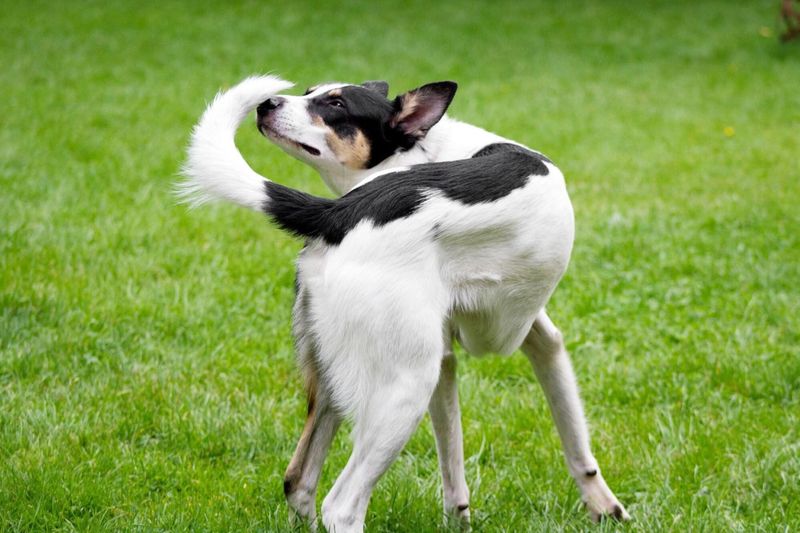
Tail chasing can look entertaining but often signals boredom or anxiety. Dogs and cats might chase their tails when they’re understimulated or stressed.
Providing interactive toys and engaging in playtime can help alleviate this behavior. If your pet continues to chase its tail excessively, it might be time for a vet visit to rule out underlying issues. Understanding this behavior helps create a more fulfilling environment for your pet.
Over-Grooming
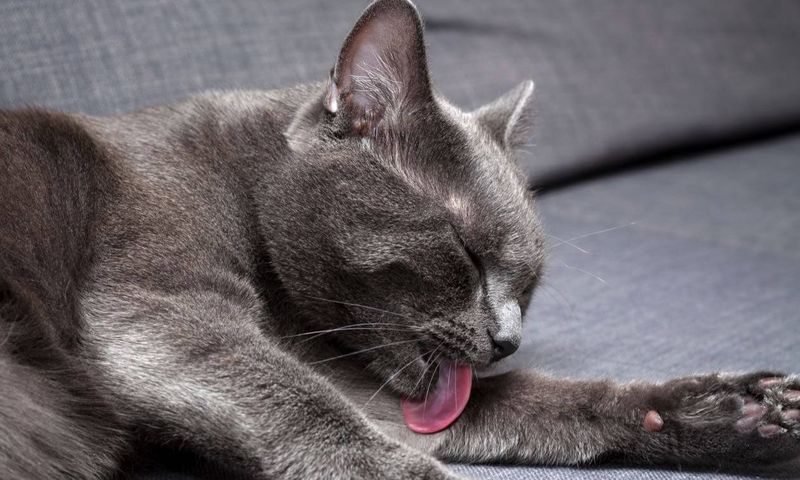
Over-grooming can lead to bald patches and skin irritation. Cats and some dogs might groom excessively as a response to stress or allergies.
Regular grooming sessions can help, but if the behavior persists, consider environmental changes or consult a vet. This behavior is often a sign that your pet is trying to calm itself in a stressful situation. Addressing the root cause is crucial for their health.
Excessive Barking or Meowing

Constant barking or meowing might seem comedic but often indicates distress. Pets may vocalize excessively due to loneliness, fear, or a need for attention.
Ensure their environment is enriching and that they receive ample attention. Training and positive reinforcement can be effective solutions. When vocalizations become disruptive, it’s important to explore potential underlying causes. Addressing these can enhance your pet’s quality of life.
Digging Holes
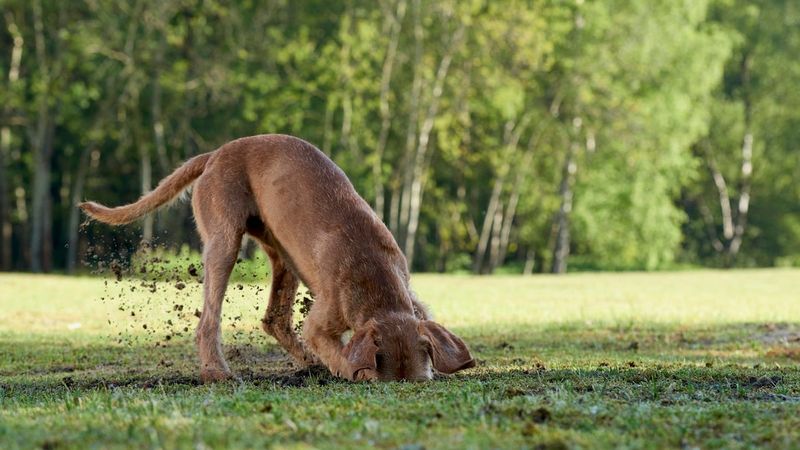
Digging holes is natural but can become problematic if done excessively. Dogs dig for various reasons: cooling off, hunting for pests, or out of boredom.
Providing a sandbox or designated digging area can channel this energy appropriately. If digging seems obsessive, extra physical activity and mental stimulation might be needed. Understanding this behavior helps maintain a harmonious garden and a happy pet.
Scratching Furniture
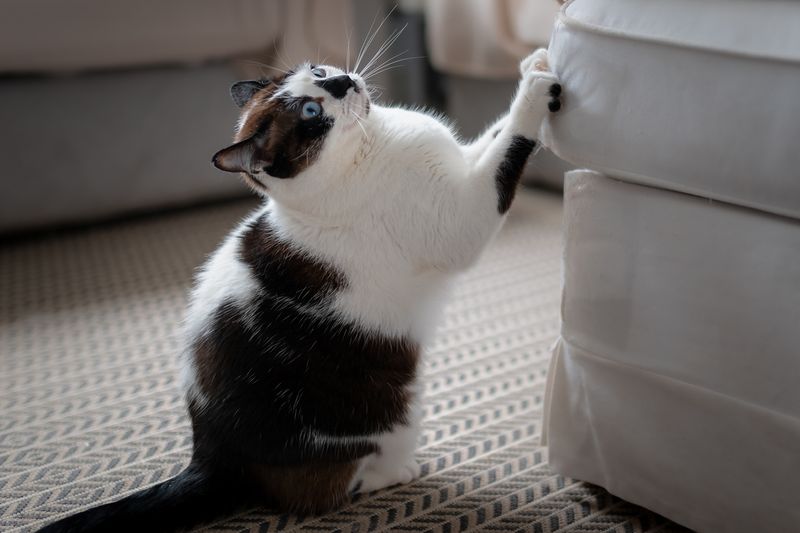
© Merrimac Valley Animal Hospital
Cats scratch furniture to mark territory and maintain claw health. While it might seem destructive, it’s a natural behavior.
Offering scratching posts and deterrent sprays can redirect this behavior. Observing when and why your cat scratches can provide insights into their needs. Supporting this instinct in a controlled way ensures your home remains intact and your cat content.
Pacing or Restlessness

Pacing often signals anxiety or discomfort in pets. Restlessness can arise from changes in the environment, such as new people or loud noises.
Creating a calming space with familiar scents and sounds can help ease their nerves. If pacing persists, it might indicate a medical issue, warranting a vet visit. Recognizing this behavior as a plea for help can lead to a more peaceful home for both you and your pet.
Hiding or Avoidance

When pets hide frequently, it can reflect fear or stress. This behavior is common in new environments or around unfamiliar people.
Creating safe spaces and allowing gradual acclimatization can ease their anxiety. Persistent hiding, however, might indicate health issues, making a vet check-up advisable. Understanding this behavior as more than just shyness can enhance your pet’s comfort significantly.
Excessive Sleeping

While many pets enjoy napping, excessive sleep might hint at boredom, depression, or health problems. Older pets often sleep more, but sudden changes in sleep patterns should be monitored.
Engaging your pet in more activities and providing a stimulating environment can help. If excessive sleeping continues, consulting a vet can rule out medical issues. Recognizing this sign ensures timely intervention and improved well-being for your pet.
Loss of Appetite
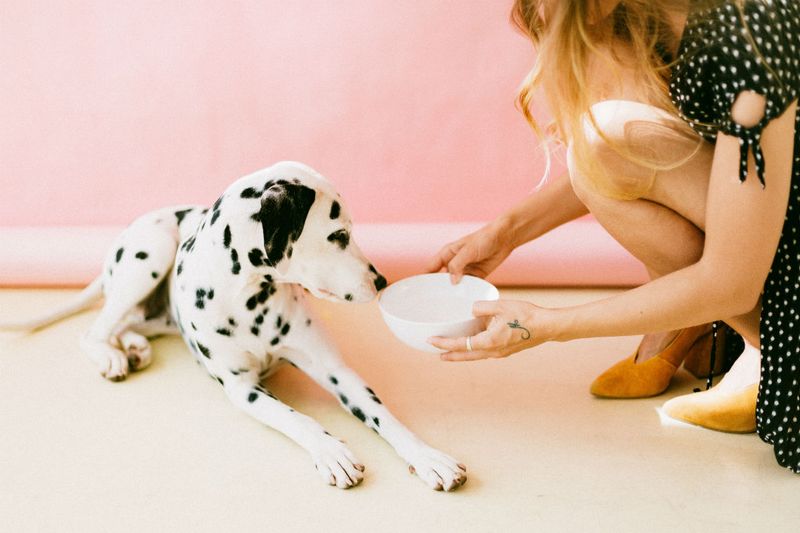
A sudden lack of interest in food might not just be picky eating; it can signify stress or illness. Changes in diet, environment, or routine often impact appetite.
Offering a variety of foods and maintaining a consistent feeding schedule can help. If your pet’s appetite doesn’t improve, a vet visit is crucial to rule out health issues. Understanding this behavior as a warning signal ensures your pet’s health and happiness.
Aggressive Play
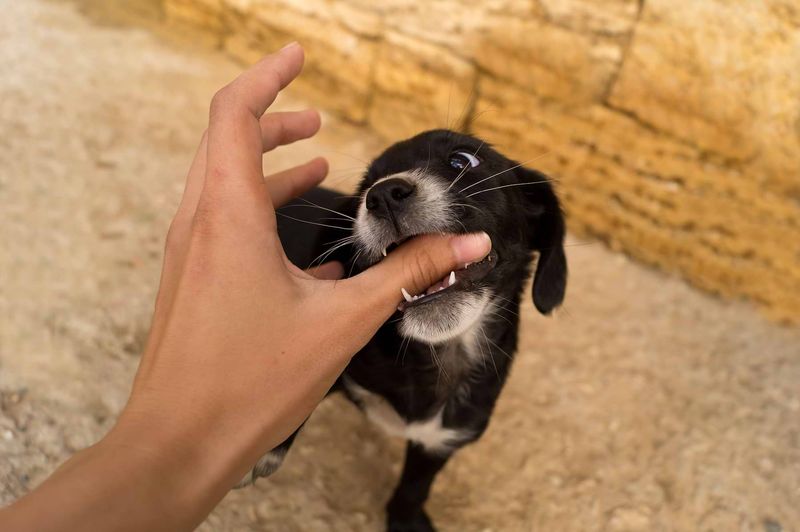
What seems like rough play can sometimes escalate into aggression. Puppies and kittens often test boundaries, but persistent aggressive play might indicate frustration or a lack of socialization.
Structured playtime and training can redirect their energy. Observing interactions helps differentiate between play and aggression. Addressing this behavior promptly fosters a safer environment for all involved.
Frequent Licking of People
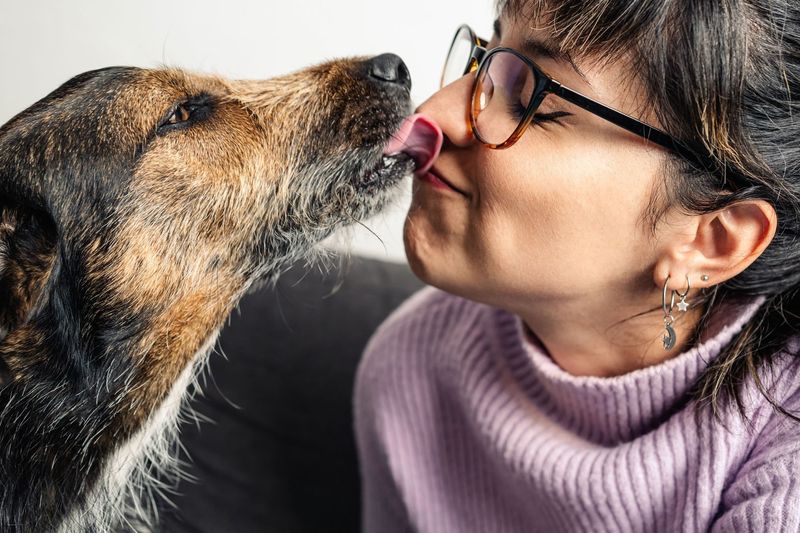
Licking can indicate affection, but excessive licking might point to anxiety or boredom. Dogs often lick to soothe themselves or seek attention.
Offering distractions like toys and engaging in regular exercise can reduce this behavior. If licking becomes obsessive, it’s wise to explore possible underlying causes. Recognizing this as a potential plea for help ensures a happier and healthier pet.
Destructive Behavior

Destruction, such as knocking items over, often stems from boredom or anxiety. Cats and dogs may act out when their needs aren’t met.
Providing mental and physical stimulation can help curb these tendencies. Observing what triggers destruction can offer insights into your pet’s needs. Addressing this behavior promptly prevents mishaps and encourages a more harmonious household.
Yawning Excessively

Frequent yawning may seem amusing, but it often indicates stress or fatigue. Pets yawn to calm themselves, especially in new or challenging situations.
Ensuring a calm environment and recognizing stressors can help reduce excessive yawning. If this behavior persists, it might be worthwhile consulting a vet. Understanding this behavior as more than a cute quirk enhances your pet’s comfort and security.
Head Pressing Against Objects
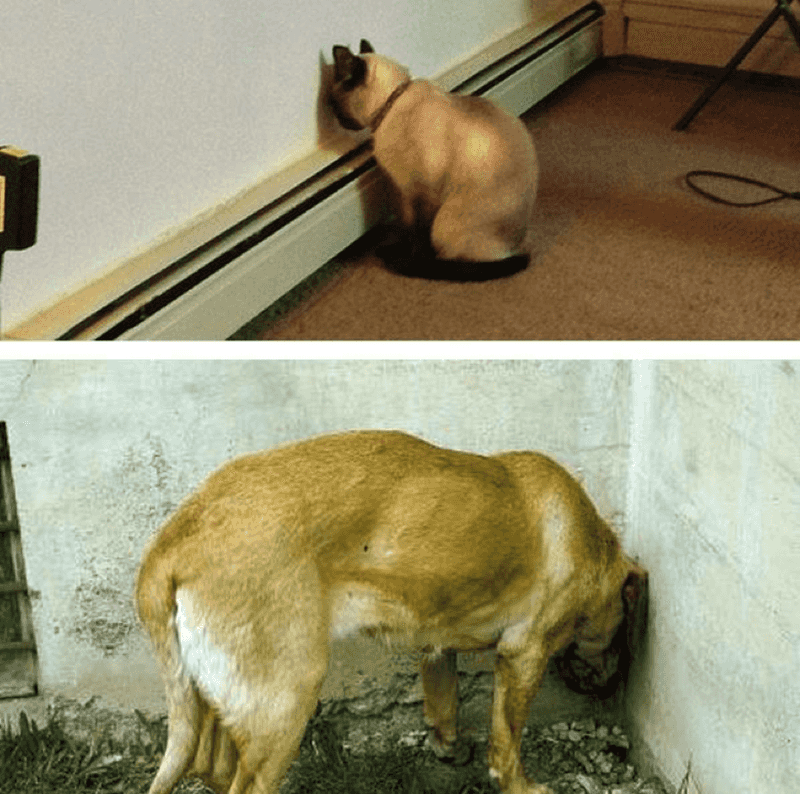
Head pressing can be a serious sign, often indicating neurological issues. Pets may press their heads against walls or furniture when disoriented or in pain.
This behavior warrants immediate veterinary attention, as it can signal severe health problems. Recognizing head pressing as more than an odd habit ensures timely intervention and care. Addressing it promptly can be life-saving.
Refusing to Play or Engage

When pets refuse to engage in play, it can indicate depression or illness. A once lively pet that suddenly becomes withdrawn might be signaling distress.
Offering new toys or activities and spending quality time together can encourage engagement. If the behavior persists, seeking veterinary advice is essential. Recognizing this change as a cry for help ensures your pet remains active and content.

